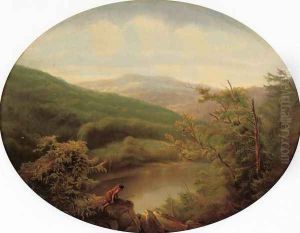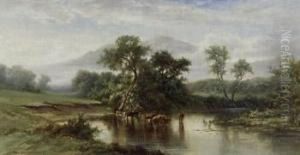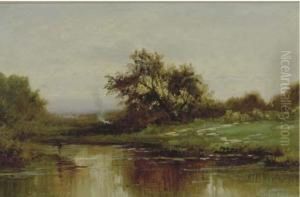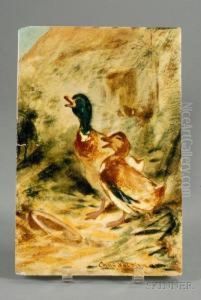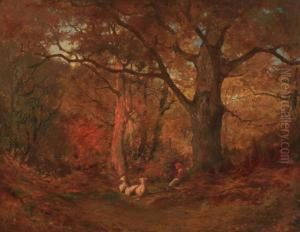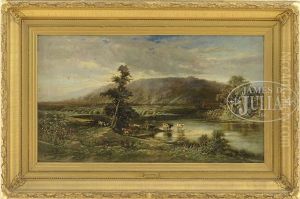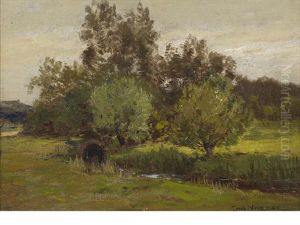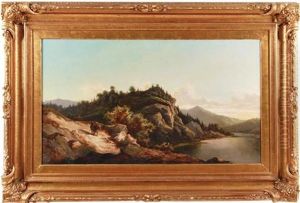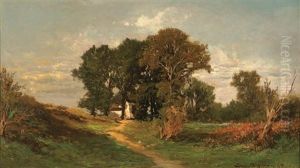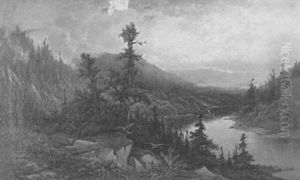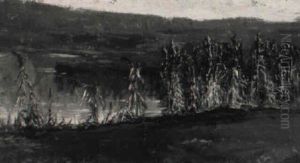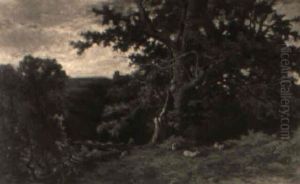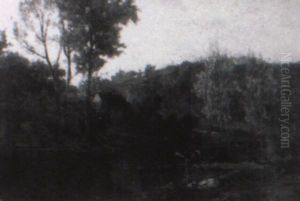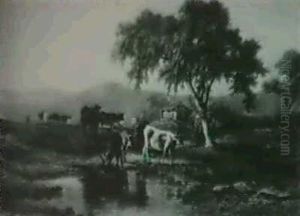Charles Volkmar Paintings
Charles Volkmar was an accomplished American painter and ceramist born on November 6, 1841, in Baltimore, Maryland. His artistic journey began under the tutelage of his father, a decorative painter, which sparked Volkmar's interest in the arts. He later moved to France to refine his skills, studying painting at the prestigious École des Beaux-Arts in Paris. During his time in France, Volkmar was heavily influenced by the Barbizon School, a group of artists known for their realistic and pastoral landscapes. He particularly admired the work of Charles-François Daubigny, one of the school's leading figures.
After returning to the United States in the late 1860s, Volkmar continued his career as a painter, capturing the serene beauty of American landscapes. However, his artistic focus shifted when he discovered the art of ceramics. His passion for pottery was ignited by the earthenware displayed at the Centennial Exposition in Philadelphia in 1876. Recognizing the potential for combining his painting expertise with ceramics, Volkmar began experimenting and eventually established a pottery studio in Greenpoint, Brooklyn.
In the 1880s, Volkmar moved his operations to Metuchen, New Jersey, and continued to innovate in the field of ceramic art. He specialized in creating glazes that captured the essence of his landscape paintings, particularly the atmospheric effects he so admired in the work of the Barbizon School. Volkmar's dedication to his craft led to the development of unique glazes and techniques that earned him critical acclaim, including a distinctive blue glaze reminiscent of the sky or water, which became a hallmark of his work.
Volkmar's ceramics were exhibited widely during his lifetime, and he garnered numerous awards for his contributions to American art pottery. He ran his pottery studio with the help of his son, Leon Volkmar, who continued the family tradition after Charles Volkmar's death in Metuchen on December 4, 1914. Today, Charles Volkmar's work is recognized for its artistic merit and is collected by enthusiasts of both American landscape painting and art pottery.
